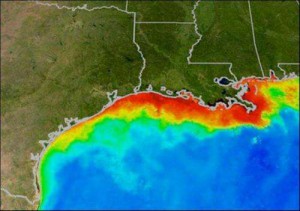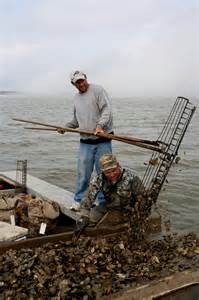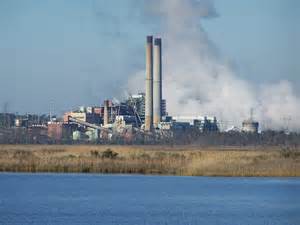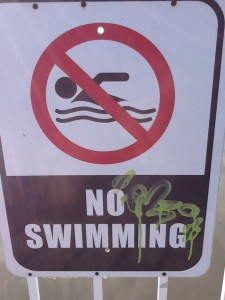I don’t want this to sound like a “Debbie Downer”… but there are problems with our estuaries and panhandle residents should be aware of them. There are things you can do to correct them – which we will discuss in the final issues of this series – but you need to understand the problem to be able to solve it. Unfortunately there are many issues and problems our bays and bayous face and we do not have time in this short article to discuss them all, but we will discuss some.
We’ll start at the top… with our rivers. Since the founding of our nation many communities were built on estuaries; those that were not were built on the rivers. Water was an easy way to move throughout the country – much easier than wagon crossing over the Appalachians or through a bog. There are several communities that developed along the rivers that feed the panhandle bays. Though the situation has improved in the last few decades, most of these communities have used these rivers as a place to dump their waste. Assorted chemicals, sewage, and solid waste were discharged… and it all came down to us. The Mississippi River is an example of this problem. Discovered in the 1990’s the Louisiana Dead Zone is an area in the Gulf where the levels of dissolved oxygen are so low that little or no life can be found on the ocean floor there. It is believed to be trigger by nutrients, chemical fertilizers and animal waste, being discharged upstream. These nutrients create a bloom of plankton, which can darken the water. Though the phytoplankton can produce oxygen during the daylight hours, they consume it in the evening, lowering the concentration of dissolved oxygen within the water column. The plankton are relatively short lived and eventually die. As the dead plankton fall out to the seafloor bacteria begin to decompose their bodies thus dropping the dissolved oxygen levels further. When the dissolved oxygen concentrations drop below 4.0 millgrams/liter we say the water is hypoxic (low in oxygen). Many species of aquatic organisms begin to stress. At 2.0 mg/L many species will die and we have a “dead zone”. If it reaches 0.0 mg/L we say the water is anoxic (without oxygen). This process is called eutrophication and not only a problem at the mouth of the Mississippi River, it occurs in almost all of the bays and bayous of the panhandle and is the primary cause of local fish kills.
A more recent issue with our rivers has been the reduction of water. In the so called “Water Wars” the state of Georgia has used its damn system to block the flow of the Chattahoochee River to create electricity and a reservoir of drinking water for river communities. Under normal conditions this has not created a problem however in recent years the southeast has experienced drought and the state of Georgia has had the need to hold back water for large communities – such as Atlanta. This has reduced the amount of water flowing towards the Gulf and has impacted communities all along the way. It is not the only issue but is the primary factor triggering the collapse of the oyster industry in Apalachicola. The reduced freshwater flow has increased salinities in the bay. This has disrupted the life cycle of the eastern oyster and has increased both predation and disease within these populations. Apalachicola produces over 90% of Florida’s oysters and 10% of the oysters for the entire country! Oysters are a huge industry in this town. Many are oystermen and many others process the product when it is landed… the industry is on the verge of collapsing. (Learn more).
These are just some the issues stemming from the rivers… what about the issues initiated from the communities that live along the bay…
How about the seafood? We discussed the oyster industry in Apalachicola Bay but oyster production in other local bays has declined as well (for other reasons). Scallops are gone from many of their historic estuaries, shrimp and blue crab landings are down, this year mullet seem to be hard to find. What is going on here? For the most part the decline in seafood products can be tied to either a decline in water quality or from over harvesting. The harvesting issue is easy… do not harvest as much. However these fisheries management decisions impact many lives and has caused a lot of debate. First you need to determine whether the decline is due to overharvesting or some other environmental factor… easier said than done. Certainly the biology of your target species will give you an idea of how many animals you can remove from the system and sustain a healthy population (maximum sustainable yield) but this method has triggered debate as well. Most fishermen do not want to see the fishery collapse and are willing to work with fishery managers to assure this – but they do have bills to pay. Fishery managers have a responsibility to assure the fishery remain for current and future generations of fishermen and they are basing their decisions on the best available science. It is a touchy subject for many and a problem within our estuaries.
The other cause of declining seafood is poor water quality. You can talk to any “ole timer” and they will tell you about the days when the water was clearer, the grass was thicker, and the fish were more abundant… what happen? I spoke with my father-in-law before he passed away about the changes he saw in Bayou Texar in Pensacola. He remembers being able to see the bottom, more seagrass, and being able to catch a variety of finfish as well as shrimp the size of your hand. The first change he remembered was a change in water clarity… it became murkier… and this happen about the time they began to develop the east side of the bayou. As our communities grew more land was cleared for development. The cleared land allowed more runoff to reach the creeks, bayous, and bays. Infrastructure had to be placed to reduce flooding of yards and streets – Bayou Texar has 38 storm drains. All of this led to more runoff into our water ways. With the increase in turbidity the amount of sunlight reaching the bottom was reduced and seagrasses began to decline. Many species of seagrass require salinities of 25 parts per thousand or higher and the increase in freshwater runoff lowered the salinity which also stressed these grasses. Much of this runoff included sand and silt and the grasses were basically buried. All in all seagrasses declined… and with them many of the marine creatures. Salt marshes were removed for coastal developments, industries were located on our rivers and bays and introduced their chemical discharge, and boating activity increased… our estuaries were being literally “loved to death”. I have seen in my lifetime the decline of sea urchins and scallops from our bay, the increase in turbidity, and the decline of seagrasses. But we cannot blame all of this on habitat loss and pollution. Speaking recently with fisheries managers they believe the recent decline in blue crab landings is due to drought. Reduction in rainfall means reduction in river discharge, which means an increase in salinity and a disruption of the crab reproductive cycle.
Another problem that is associated with runoff has been the increase in bacteria. Fecal coliform bacteria are found in the stomachs of birds and mammals. They assist with our digestion and are released into the environment whenever we (or they) go to the bathroom. So finding fecal coliforms in the water is not unusual… the problem is TOO many fecal coliforms. As mentioned coliforms are not a threat to us but they are used as an indicator of how much waste is in the water. Feces harbors many other microbes in addition to coliforms – hepatitis and cholera outbreaks have been linked to sewage in the water. So agencies monitor for these each week. Most agencies will monitor for E. coli when sampling freshwater and Enterococcus in saline waters. E. coli values of 800 colonies / 100 milliters of sample or higher, and Enterococcus values of 104 colonies / 100 ml of sample will trigger a health advisory being issued – and some bodies of water being closed. In the Pensacola area the Florida Department of Environmental Protection and the Escambia County Health Department both monitor for bacteria. They post their results each week and I, in turn, post to the community. Our local bayous are averaging between 8-10 advisories each year. The problem with these advisories is that residents who live on the waterways, businesses (such as hotels and ecotours) who use the waterways become concerned about entering the water. It is not good for business or property values if the body of water you are on has high levels of bacteria and signs posting “no swimming”.
There are many problems our estuaries are facing but for this article we will end with solid waste. Trash and garbage has been a problem since I can remember. Campaigns have been launched each decade to try and reduce the problem but the problem still exist. Plastics and monofilament litter the beaches and waterways creating problems for marine life and an “eye soar” for those enjoying the bay. I am currently working with the Wildlife Sanctuary of Northwest Florida and CleanPeace to monitor solid waste in Pensacola Bay. Each week CleanPeace host a Saturday event they call “Ocean Hour” where they select a location on the bay and clean for an hour. They submit the top three items to me each week and have been doing this since January… it has been pretty consistent… cigarette butts, plastic food wrappers, and plastic drink containers. We are not going to get rid of garbage on our beaches but if we can consistently reduce the “top three” we should be able to reduce the problem.
More on what we can do to help in the final issue.
- Rattlesnakes on Our Barrier Islands; Part 4 – Thermoregulation - December 29, 2025
- Rattlesnakes on Our Barrier Islands; Part 3 – Envenomation - December 22, 2025
- St. Joe Red Tide Claiming Terrapins - December 15, 2025




